Home>Garden Essentials>What Can I Use Instead Of Mulch For Landscaping
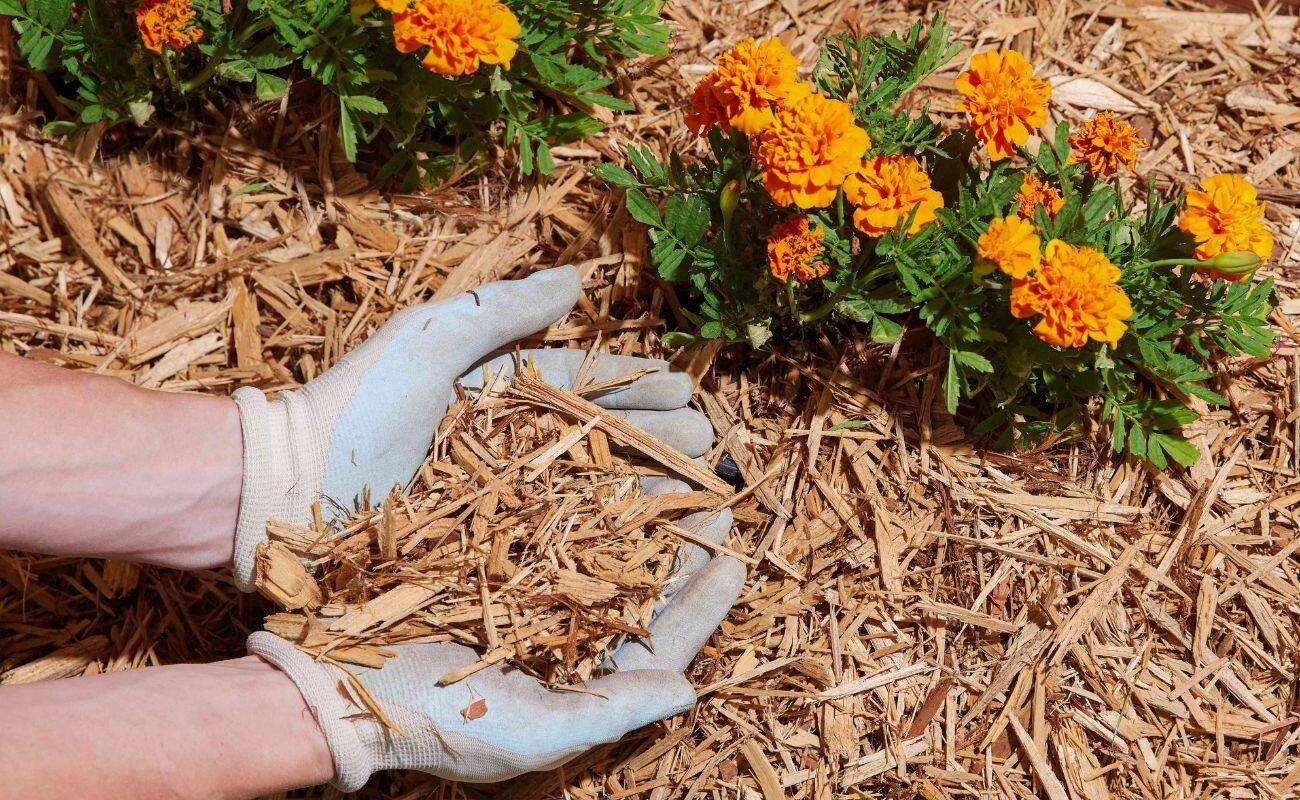

Garden Essentials
What Can I Use Instead Of Mulch For Landscaping
Modified: March 24, 2024
Looking for alternatives to traditional mulch for your garden landscaping? Explore other options that can enhance your garden's aesthetic appeal and provide effective weed control without the use of mulch.
(Many of the links in this article redirect to a specific reviewed product. Your purchase of these products through affiliate links helps to generate commission for Storables.com, at no extra cost. Learn more)
Introduction
When it comes to landscaping, mulch is often an essential component. It not only enhances the appearance of your garden but also provides numerous benefits such as weed suppression, moisture retention, and soil insulation. However, there may be situations where using traditional mulch might not be feasible or desirable. Whether it’s due to budget constraints, lack of availability, or personal preference, it’s always good to have alternatives on hand.
In this article, we will explore various alternatives to traditional mulch for landscaping. These alternatives offer unique benefits and can add a touch of creativity and diversity to your garden design. It’s important to note that each alternative has its own set of considerations, so it’s essential to understand your unique landscaping needs before making a decision.
By considering these alternatives, you can find a suitable option that complements your garden aesthetic while still providing the benefits that traditional mulch offers. So, let’s dive into the world of mulch alternatives and discover what you can use to enhance your landscaping!
Key Takeaways:
- Ditching traditional mulch? Try gravel for a modern look, wood chips for natural vibes, or rubber mulch for durability. Each alternative offers unique benefits to enhance your garden’s health and beauty.
- Looking for a sustainable mulch option? Consider using leaves, compost, or ground covers to promote a healthy ecosystem in your garden. These alternatives offer practical benefits and contribute to a vibrant landscape.
Read more: What Can I Use Instead Of Curtains
Benefits of Using Mulch
Mulch is widely used in landscaping for its numerous benefits. Understanding these benefits can help us appreciate why mulch is a popular choice for gardeners and landscapers. Here are some key advantages of using mulch:
- Weed suppression: Mulch acts as a barrier, preventing weed growth by minimizing sunlight exposure to weed seeds. This reduces the need for frequent weeding and helps keep your garden looking tidy.
- Moisture retention: Mulch helps retain moisture in the soil by reducing evaporation. This is especially beneficial in hot climates or during dry spells, as it helps conserve water and keeps plants hydrated.
- Soil insulation: Mulch acts as a protective layer, insulating the soil from extreme temperatures. It keeps the soil cooler in the summer and warmer in the winter, creating a more stable environment for plant roots.
- Prevents erosion: Mulch helps prevent soil erosion by reducing the impact of heavy rainfall and wind. The layer of mulch acts as a buffer, safeguarding the soil from being washed away or blown off.
- Enhances soil fertility: Over time, organic mulches break down and enrich the soil with essential nutrients. This improves soil fertility and creates a favorable environment for healthy plant growth.
- Gives a polished look: Mulch adds visual appeal to your garden. Whether you choose a natural or colored mulch, it can transform the overall appearance of flower beds, pathways, and other landscape features.
These benefits make mulch an attractive and practical option for landscaping projects. However, it’s important to note that mulch is not the only solution available. There are various alternatives that can provide similar benefits while adding their own unique touch to your garden design.
Reasons for Seeking Alternatives to Mulch
While mulch offers numerous benefits, there can be several reasons why you might consider alternatives to traditional mulching materials. Here are a few common reasons for seeking alternatives:
- Budget constraints: Mulch can be an additional expense, especially for larger landscaping projects. Alternatives to mulch may provide a more cost-effective solution while still achieving the desired results.
- Personal preference: Some gardeners have specific preferences when it comes to the aesthetics of their garden. Mulch alternatives can offer a different look or texture that aligns better with their desired style.
- Availability: Depending on your location, certain types of mulch may be difficult to find or not readily available. In such cases, exploring alternative materials can be a practical solution.
- Environmental sustainability: While mulch is generally considered environmentally friendly, there may be concerns about the source or production of certain mulching materials. Alternative options can offer more eco-friendly alternatives in line with sustainability goals.
- Specific landscaping needs: Some gardens may have specific requirements that traditional mulch cannot fulfill. For example, if you have a sloped garden where mulch may wash away easily, considering alternative options that provide better stability can be beneficial.
- Unique aesthetic appeal: Mulching alternatives can provide different colors, textures, and patterns that add a unique and distinctive look to your garden. They can help you create a visually striking landscape that stands out from the traditional mulched gardens in the neighborhood.
By considering these reasons, you can determine if using alternatives to mulch is the right choice for your landscaping project. It’s important to weigh the pros and cons of both traditional mulch and its alternatives to make an informed decision that aligns with your budget, personal preferences, and specific garden needs.
Considerations When Choosing Alternatives to Mulch
When considering alternatives to traditional mulch for your landscaping project, there are several important factors to take into account. These considerations will help you select the most suitable option that aligns with your garden’s needs and your personal preferences. Here are the key considerations when choosing alternatives to mulch:
- Functionality: Determine what benefits you expect from mulch and ensure that the alternative you choose can fulfill those functions. For example, if you need weed suppression, look for materials that effectively block weed growth.
- Availability: Consider the availability of the alternative material in your area. You want to choose an option that is easily accessible and won’t become a hassle to obtain in the future.
- Maintenance: Evaluate the maintenance requirements of the alternative material. Some alternatives may require more frequent upkeep, such as replenishing or reapplying, compared to traditional mulch.
- Aesthetics: Assess how the alternative material will look in your garden. Consider the color, texture, and overall appearance it will provide. Ensure that it complements your garden design and enhances its visual appeal.
- Longevity: Determine the lifespan of the alternative material. Some options may break down more quickly than others, requiring more frequent replacement. Consider the durability of the material and how it will withstand weather conditions and foot traffic.
- Environmental impact: Take into account the environmental impact of the alternative material. Consider if it is sourced sustainably, if it is biodegradable, and if it aligns with your commitment to eco-friendly gardening practices.
- Budget: Evaluate the cost of the alternative material and compare it to traditional mulch. Ensure that it fits within your budget and provides the desired benefits without breaking the bank.
By carefully considering these factors, you can make an informed decision and choose the most suitable alternative to traditional mulch for your landscaping project. It’s important to strike a balance between functionality, aesthetics, maintenance, and environmental impact to create a beautiful and sustainable garden.
List of Alternatives to Mulch for Landscaping
When exploring alternatives to traditional mulch for your landscaping needs, there is a wide range of materials to choose from. Each alternative offers unique characteristics and benefits. Here is a list of alternatives to mulch that you can consider:
- Gravel: Gravel is a popular choice for creating a low-maintenance and drought-tolerant landscape. It comes in various sizes and colors, allowing for customization and visual appeal.
- Wood Chips or Bark: Wood chips or bark offer a natural and organic look to your garden. They provide weed suppression and moisture retention benefits while breaking down slowly over time to enrich the soil.
- Straw: Straw is an affordable and easily accessible option for mulch. It is excellent for vegetable gardens, as it helps retain moisture and regulate soil temperature.
- Pine Needles: Pine needles, also known as pine straw, are a popular choice in areas with pine trees. They provide good weed suppression, retain moisture, and have a unique rustic aesthetic.
- Leaves or Leaf Mold: Fallen leaves can be collected and used as mulch or transformed into leaf mold. Leaf mold improves soil structure and enhances moisture retention.
- Compost: Using homemade or commercial compost as mulch is an excellent way to recycle organic waste and improve soil fertility. It provides nutrients and helps retain moisture.
- Rubber Mulch: Made from recycled tires, rubber mulch offers durability and long-lasting performance. It provides weed suppression, retains moisture, and can be found in various colors.
- Cocoa Hulls: Cocoa hulls, a byproduct of cocoa bean processing, are a rich and fragrant mulch option. They retain moisture, suppress weeds, and add a pleasing aroma to your garden.
- Stone or Pebbles: Stone or pebble mulch creates a modern and clean look in the garden. It is low maintenance, helps with drainage, and adds texture to the landscape.
- Ground Covers: Consider using low-growing plants as living mulch. Ground covers like creeping thyme or moss provide weed suppression, moisture retention, and add a vibrant touch to the garden.
Each of these alternatives offers its own set of benefits and considerations. It’s important to assess your specific landscaping needs, budget, and desired aesthetics to choose the most suitable option for your garden.
Read more: What Can I Use Instead Of A Protractor
Gravel
Gravel is a versatile alternative to traditional mulch that provides a unique aesthetic appeal to your landscaping. It offers a low-maintenance and durable option for various garden styles. Here are some key features and benefits of using gravel as an alternative mulch:
Features:
- Size and Colors: Gravel can be found in various sizes and colors, allowing you to customize your garden design. Common sizes include pea gravel, which is small and rounded, or larger stones for a bolder look.
- Texture: Gravel has a smooth texture that adds a contemporary and modern touch to your landscape. Its rougher variations can provide a more natural and rustic feel.
- Drainage: Gravel is excellent for ensuring proper drainage in your garden. Its porous nature allows water to infiltrate the soil efficiently, preventing waterlogging and minimizing the risk of root rot.
- Durability: Unlike organic mulches that break down over time, gravel is long-lasting and can withstand various weather conditions without losing its functionality.
Benefits:
- Weed Suppression: The solid surface of gravel blocks sunlight, inhibiting weed growth and reducing the need for frequent weeding.
- Moisture Retention: While gravel doesn’t retain moisture as effectively as organic mulch, it does help prevent excessive evaporation and can help conserve water in your garden.
- Low Maintenance: Once installed, gravel requires minimal upkeep. It doesn’t need annual replacement like organic mulches, making it a cost-effective choice in the long run.
- Aesthetic Appeal: Gravel offers a clean, contemporary look that complements modern garden designs. It can highlight architectural features or act as a backdrop for colorful plants.
- Versatility: Gravel can be used in various areas of your garden, including pathways, patios, and around plants. It provides a consistent look and can easily be incorporated into existing landscaping elements.
When using gravel as an alternative to mulch, it’s essential to prepare the site properly. Install a landscape fabric or geotextile before laying the gravel to prevent weed growth from below. Additionally, consider edging materials to keep the gravel contained and prevent migration.
Overall, gravel offers a low-maintenance and visually appealing alternative to traditional mulch. It suits modern and contemporary gardens and is particularly beneficial for areas that require excellent drainage. Consider using gravel as an alternative mulch to create a unique and stylish landscape that stands out.
Wood Chips or Bark
Wood chips or bark are popular alternatives to traditional mulch that provide a natural and organic look to your landscaping. They offer several benefits and can be easily obtained from tree trimming or landscaping companies. Here’s what you need to know about using wood chips or bark as mulch:
Features:
- Material: Wood chips or bark are typically made from shredded or chipped tree bark or branches. They come in different sizes and textures, allowing you to choose the one that best suits your garden design.
- Color: The color of wood chips or bark can vary depending on the tree species they come from. Common colors include brown, red, or black, which can add depth and dimension to your garden.
- Texture: Wood chips or bark have a coarse texture that can create a natural and rustic feel in your landscape. Smaller chips may have a finer texture, while larger pieces provide a chunkier appearance.
Benefits:
- Weed Suppression: Wood chips or bark form a layer that acts as a barrier, preventing weed growth by blocking sunlight and reducing competition for resources.
- Moisture Retention: Wood chips or bark help retain moisture in the soil by reducing evaporation, thus providing a more stable environment for plant roots.
- Soil Insulation: The layer of wood chips or bark provides insulation, keeping the soil cooler in the summer and warmer in the winter, which promotes optimal plant growth.
- Improved Soil Health: Over time, wood chips or bark break down and enrich the soil with organic matter, improving soil fertility and enhancing microbial activity.
- Erosion Control: The mulch layer helps prevent soil erosion by reducing the impact of heavy rains and wind, protecting the soil from being washed away.
- Aesthetic Appeal: Wood chips or bark provide a natural and earthy look to your garden, enhancing its overall aesthetic appeal and blending seamlessly with the surrounding vegetation.
When using wood chips or bark as mulch, it’s important to apply a layer of sufficient thickness, typically around 2 to 4 inches, to provide adequate weed suppression and moisture retention. However, avoid piling the mulch directly against the plant stems to prevent moisture-related issues or pest infestation.
Wood chips or bark are readily available and can be easily replenished over time as they break down. They offer a sustainable and cost-effective alternative to traditional mulch while providing numerous benefits to your garden. Consider using wood chips or bark to create a natural and visually appealing landscape that complements your gardening style.
Straw
Straw is an affordable and readily available alternative to traditional mulch that can provide several benefits to your landscaping. It is commonly used in vegetable gardens but can also be used in flower beds and around shrubs. Here’s what you need to know about using straw as mulch:
Features:
- Material: Straw is the dry, hollow stalks of harvested cereal crops such as wheat, barley, or oats. It is lightweight, easy to handle, and can be easily obtained from agricultural supply stores or local farmers.
- Color: Straw typically has a golden or pale yellow color, which can add a warm and earthy tone to your garden.
- Texture: Straw has a coarse texture with long stalks that interlock when spread over the ground. It creates an airy layer and allows for proper airflow to the soil.
Benefits:
- Weed Suppression: Straw acts as a natural barrier, preventing weed seeds from germinating by blocking sunlight and reducing competition for nutrients.
- Moisture Retention: Straw helps retain moisture in the soil by reducing evaporation, allowing plants to access water for longer periods and minimizing the need for frequent watering.
- Soil Insulation: The layer of straw provides insulation, protecting the soil from extreme temperatures and creating a more stable environment for plant roots.
- Added Organic Matter: As straw breaks down over time, it contributes organic matter to the soil, improving its structure and fertility.
- Absorbs Water: Straw can absorb and hold a significant amount of water, which is beneficial during heavy rains or irrigation, preventing soil erosion.
- Affordability: Straw is a cost-effective mulching option, especially for larger garden areas. It is widely available and can be purchased in bales at affordable prices.
When using straw as mulch, ensure that it is free from weed seeds to avoid introducing new weeds to your garden. Apply a layer of straw around 3 to 6 inches thick, taking care not to smother the base of plants. Additionally, keep the straw fluffy to promote airflow and prevent the development of mold or rot.
Straw is particularly beneficial in vegetable gardens as it helps suppress weeds while allowing water and nutrients to reach the plants’ root systems. It is also easy to remove or till into the soil at the end of the growing season.
Consider using straw as an affordable and effective alternative mulch that provides weed suppression, moisture retention, and soil insulation benefits. It’s a practical choice for both novice and experienced gardeners who are looking for an economical and sustainable mulching option.
Pine Needles
Pine needles, also known as pine straw, are a unique and natural alternative to traditional mulch that can add a touch of rustic charm to your landscaping. They are particularly popular in areas with pine trees. Here’s what you need to know about using pine needles as mulch:
Features:
- Material: Pine needles are the foliage that naturally sheds from pine trees. They are lightweight and can be easily gathered from the ground or purchased in bales from gardening centers.
- Color: Pine needles have a distinctive golden-brown color that adds warmth and depth to your garden. The color can vary slightly depending on the type of pine tree.
- Texture: Pine needles are long, slender, and flexible. They create a loose and fluffy mulch layer that allows for good airflow and water penetration.
Benefits:
- Weed Suppression: Pine needles form a dense layer that helps suppress weed growth, preventing sunlight from reaching weed seeds and minimizing competition for nutrients.
- Moisture Retention: The interlocking nature of pine needles creates a natural barrier that reduces evaporation, allowing the soil to retain moisture and keeping the roots of plants hydrated.
- Soil Insulation: Pine needles act as an insulating layer, helping to regulate soil temperature by keeping it cooler in the summer and warmer in the winter. This helps promote healthy plant growth.
- Acidic Properties: Pine needles are slightly acidic, making them an excellent mulch choice for acid-loving plants such as azaleas, rhododendrons, and blueberries.
- Natural Decay: As pine needles break down over time, they add organic matter to the soil, improving its structure and fertility. This can benefit tree and shrub root systems.
- Aesthetically Pleasing: Pine needles have a unique and earthy aesthetic appeal that can enhance the natural beauty of your garden. They create a forest-like atmosphere and blend well with woodland gardens or native plantings.
When applying pine needles as mulch, spread a layer that is about 2 to 3 inches thick, ensuring the soil is already moist before application. Rake the needles lightly to create an even layer without packing them down too tightly.
It’s important to note that pine needles may take longer to decompose compared to other organic mulches. They are also prone to blowing away in windy areas, so consider adding an edging or using a light layer of compost or soil to help anchor the needles in place.
Pine needles provide an attractive, natural, and sustainable alternative to traditional mulch. Consider using them in your garden to enjoy the unique benefits they provide while adding a touch of rustic elegance to your landscape.
Read more: What Can I Use Instead Of A Ladder
Leaves or Leaf Mold
Leaves or leaf mold are organic alternatives to traditional mulch that offer numerous benefits to your garden. They are easily accessible and can be a sustainable option for using natural resources within your landscape. Here’s what you need to know about using leaves or leaf mold as mulch:
Features:
- Material: Leaves are the fallen foliage from deciduous trees. They can be collected from your own garden or gathered from the surrounding area. Leaf mold refers to partially decomposed leaves, rich in organic matter.
- Color: Leaves come in various shades of green, yellow, orange, and brown, adding a touch of seasonal beauty to your garden. Leaf mold tends to be dark brown or black, indicative of decomposition.
- Texture: Leaves are typically thin, flat, and flexible. When used as mulch, they create a light and airy layer that allows for water penetration and airflow to the soil.
Benefits:
- Weed Suppression: A layer of leaves acts as a natural weed suppressant, covering the soil surface and preventing sunlight from reaching weed seeds.
- Moisture Retention: Leaves help retain moisture in the soil by reducing evaporation. They create a barrier that slows down water loss, keeping the soil moist for longer periods and reducing the need for frequent watering.
- Soil Enrichment: As leaves break down, they contribute organic matter to the soil, improving soil structure, fertility, and microbial activity. This enhances plant nutrient uptake and overall soil health.
- Erosion Control: Leaf mulch helps reduce soil erosion caused by heavy rainfall or wind, protecting the soil surface and maintaining its integrity.
- Sustainable Practice: Utilizing fallen leaves as mulch is a sustainable practice that recycles and repurposes natural resources within your garden, minimizing waste and contributing to a healthier ecosystem.
- Cost-effective: Leaves are abundant, and using them as mulch is a cost-effective way to improve your garden’s health and appearance without having to spend extra money.
When using leaves as mulch, shred them first to facilitate decomposition and prevent matting. Apply a layer of shredded leaves about 2 to 4 inches thick, ensuring they are evenly spread over the soil surface.
If you prefer to create leaf mold, collect the leaves and pile them in a designated area. Over time, the leaves will decompose and transform into a dark, crumbly material that can be used as a soil amendment or as a mulch itself.
Leaves or leaf mold provide a natural and sustainable option for mulching your garden. Take advantage of the abundance of fallen leaves during autumn and create a nutrient-rich and visually appealing environment for your plants.
Compost
Compost is a versatile and nutrient-rich alternative to traditional mulch that offers numerous benefits for your garden. Made from organic materials, compost can be created at home through the process of decomposition or purchased from garden centers. Here’s what you need to know about using compost as mulch:
Features:
- Material: Compost is a mixture of decayed organic matter, such as kitchen scraps, yard waste, and plant debris. It is rich in nutrients, beneficial microbes, and humus.
- Color: Compost is typically dark brown or black, signifying the decomposition process and the presence of organic matter.
- Texture: Compost has a crumbly texture that is easy to spread and work with. It is relatively lightweight and can be mixed into the soil or used as a top dressing.
Benefits:
- Nutrient-Rich: Compost is a natural source of nutrients that replenishes the soil, providing essential elements for plant growth and improving overall soil fertility.
- Moisture Retention: The organic matter in compost helps retain moisture in the soil, reducing evaporation and ensuring a consistent water supply for plant roots.
- Improved Soil Structure: Compost enhances soil structure by promoting aggregation and creating a crumbly texture. This improves drainage, aeration, and the ability of plants to access water and nutrients.
- Enhanced Microbial Activity: Compost is teeming with beneficial microbes that support healthy soil ecosystems. These microbes break down organic matter, release nutrients, and suppress harmful pathogens.
- Weed Suppression: A layer of compost can help suppress weeds by inhibiting their growth and smothering weed seeds.
- Environmental Sustainability: Using compost as mulch is an environmentally friendly practice that reduces waste, as it allows the recycling of organic materials into a valuable resource for your garden.
When using compost as mulch, apply a layer that is around 1 to 2 inches thick. Avoid piling the compost directly against plant stems, as this can lead to moisture-related issues or foster the growth of diseases. Consider leaving space around the plant base to allow for airflow.
Compost can also be mixed into the soil before planting to provide long-term benefits. It can be an effective top dressing for established plants, providing an extra nutrient boost during the growing season.
By using compost as an alternative to traditional mulch, you can enhance your garden’s health, improve soil fertility, and promote a thriving ecosystem. Embrace the organic and sustainable nature of compost and watch your plants flourish.
Rubber Mulch
Rubber mulch is a unique and durable alternative to traditional mulch that offers a range of advantages for your landscaping needs. Made from recycled tires, rubber mulch provides a long-lasting solution while also contributing to a more sustainable environment. Here’s what you need to know about using rubber mulch:
Features:
- Material: Rubber mulch is made from recycled rubber tires, which undergo a process to remove any steel or contaminants. The rubber is then shredded into small, uniform pieces that resemble traditional mulch.
- Color and Texture: Rubber mulch comes in various colors, such as brown, black, and red, allowing you to choose an option that suits your garden’s aesthetic. The texture is soft and cushion-like, offering a unique feel underfoot.
- Durability: Rubber mulch is highly durable and resistant to extreme weather conditions, making it a long-lasting option for your landscaping needs.
- Non-biodegradable: Unlike organic mulches, rubber mulch does not break down over time, which means it does not need frequent replacement.
Benefits:
- Weed Suppression: Rubber mulch forms a dense layer that helps prevent weed growth by limiting sunlight penetration and reducing the availability of nutrients for weeds.
- Moisture Retention: Rubber mulch acts as an efficient moisture barrier, reducing water evaporation from the soil and helping to maintain soil moisture levels for plant roots.
- Durability: Rubber mulch withstands heavy foot traffic and does not decompose, making it a long-lasting choice for areas such as playgrounds, pathways, or areas near driveways.
- Low Maintenance: Once installed, rubber mulch requires minimal maintenance. It does not attract insects or pests and does not need to be replenished like organic mulches.
- Sustainable Use of Resources: Rubber mulch is an environmentally friendly option as it utilizes recycled materials, reducing waste from discarded tires and helping to conserve natural resources.
- Safety Features: Rubber mulch provides cushioning, making it an excellent option for areas where children play. It can help reduce the impact of falls and provide a safer environment.
When applying rubber mulch, ensure the area is properly prepared by removing any weeds or existing vegetation. Apply a layer that is around 2 to 3 inches thick to achieve the desired weed suppression and moisture retention benefits.
It’s important to note that rubber mulch does not provide the same organic matter or nutrient contribution to the soil as organic mulches. If soil improvement is a priority, consider incorporating compost or other organic amendments along with rubber mulch to create a balanced environment for plant growth.
By choosing rubber mulch as an alternative to traditional mulch, you can enjoy the benefits of a durable and low-maintenance option while also contributing to a more sustainable and eco-friendly landscaping approach.
Cocoa Hulls
Cocoa hulls are a unique and aromatic alternative to traditional mulch that brings a delightful scent to your garden. Derived from the outer shell of cocoa beans, cocoa hulls offer both aesthetics and practical benefits. Here’s what you need to know about using cocoa hulls as mulch:
Features:
- Material: Cocoa hulls are the protective shells that encase cocoa beans, which are used to make chocolate. They are a byproduct of the chocolate-making process and can be purchased as mulch.
- Color and Texture: Cocoa hulls are dark brown in color, resembling rich soil. They have a fine texture, similar to coffee grounds, which creates a uniform and visually appealing mulch layer.
- Aroma: One of the unique features of cocoa hulls is the pleasant chocolate-like aroma they emit, adding a delightful scent to your garden.
Benefits:
- Weed Suppression: Cocoa hulls form a dense layer that helps suppress weed growth by blocking sunlight and preventing weed seeds from germinating.
- Moisture Retention: The cocoa hulls act as a natural moisture barrier, reducing water evaporation from the soil and helping to maintain consistent soil moisture levels for plant roots.
- Soil Insulation: Cocoa hulls provide insulation to the soil, protecting it from extreme temperature fluctuations and creating a more stable environment for plant growth.
- Organic Matter: As cocoa hulls break down over time, they contribute organic matter to the soil, improving soil structure and fertility.
- Aesthetic Appeal: Cocoa hulls offer a unique and attractive look to your garden with their dark brown color and fine texture. They can enhance the visual appeal of flower beds, containers, and other landscape features.
- Fragrance: The aroma released by cocoa hulls can add a pleasant scent to your garden, creating a sensory delight for you and your visitors.
When applying cocoa hulls as mulch, spread them in a layer around 2 to 3 inches thick, ensuring the soil is already moist before application. Take care not to pile the mulch against plant stems to prevent moisture-related issues or the growth of pests and diseases.
It’s important to note that cocoa hulls are toxic to pets, particularly dogs, if ingested in significant quantities. If you have pets that may be tempted to consume the mulch, it’s best to consider alternative options.
Cocoa hulls provide a visually appealing and fragrant alternative to traditional mulch. They can transform your garden into a sensory haven, enhancing both the aesthetic appeal and overall enjoyment of your outdoor space.
Stone or Pebbles
Stone or pebbles are versatile alternatives to traditional mulch that offer a unique and modern look to your landscaping. They provide a low-maintenance and durable option for various garden styles. Here’s what you need to know about using stone or pebbles as mulch:
Features:
- Material: Stones and pebbles are natural materials that come in various sizes, shapes, and colors. They are typically smooth and have a polished appearance, adding a clean and contemporary look to your garden.
- Sizes and Colors: Stones and pebbles come in a range of sizes, from small pebbles to larger rocks. They also offer a variety of colors, including neutral shades like gray, white, or black, as well as more vibrant options like red or blue.
- Texture: Stones and pebbles have a smooth texture, making them pleasant to walk on. Their smooth surface also helps with water drainage and prevents weed growth.
Benefits:
- Weed Suppression: Stones and pebbles create a solid surface that impedes weed growth by blocking sunlight and preventing weed seeds from germinating.
- Moisture Conservation: Stone or pebble mulch helps retain moisture in the soil by reducing evaporation, ensuring a more consistent water supply for plant roots.
- Low Maintenance: Once installed, stones and pebbles require minimal upkeep. They do not need to be replaced or replenished like organic mulches, making them a cost-effective option in the long run.
- Drainage: The porous nature of stones and pebbles allows water to flow through, preventing waterlogging and promoting good drainage for plant roots.
- Durability: Stones and pebbles are highly durable and long-lasting, withstanding various weather conditions without losing their functionality or appearance.
- Cleanliness: Unlike organic mulches, stone or pebble mulch does not decompose or attract pests. This makes it a hygienic choice, particularly for areas such as walkways or around water features.
When using stones or pebbles as mulch, prepare the area by clearing away weeds and leveling the soil surface. Then, spread a layer of stones or pebbles with a thickness of 1 to 2 inches, ensuring even coverage throughout the desired area.
It’s important to note that stones or pebbles can retain heat, so they may not be suitable for use in areas with delicate or heat-sensitive plants. Additionally, using a landscape fabric or weed barrier beneath the stones or pebbles can help further suppress weed growth.
Stone or pebble mulch offers a contemporary and low-maintenance option for your garden. It can bring a sleek and clean aesthetic to your landscape while providing the practical benefits of weed suppression and moisture conservation.
Ground Covers
Ground covers are living alternatives to traditional mulch that offer a natural and vibrant solution for your landscaping needs. They can add beauty and functionality to your garden by providing coverage, weed suppression, and erosion control. Here’s what you need to know about using ground covers as mulch:
Features:
- Material: Ground covers refer to low-growing plants that spread and form a dense cover over the soil surface. There are various types of ground covers available, each with its own characteristics and growth habits.
- Types: Common ground cover options include creeping thyme, ajuga, sedum, vinca, and mondo grass. Each type has its own unique foliage color, texture, and growth pattern.
- Growth Habit: Ground covers generally grow horizontally, creating a carpet-like effect with their foliage. Some ground covers produce flowers, adding seasonal interest to your garden.
Benefits:
- Weed Suppression: Ground covers form a dense growth that inhibits weed growth by shading the soil and depriving weed seeds of sunlight.
- Moisture Retention: The thick layer of ground covers helps retain moisture in the soil by reducing evaporation and providing shade, keeping the soil consistently moist.
- Soil Protection: Ground covers act as a protective layer, preventing soil erosion caused by heavy rainfall or wind. Their root systems help hold the soil in place.
- Aesthetic Appeal: Ground covers offer a wide range of visual appeal, with various foliage colors, textures, and flowering patterns. They can create a lush and vibrant carpet-like effect in your garden.
- Low Maintenance: Once established, ground covers require minimal maintenance. They typically require less water, fertilizer, and pruning compared to traditional mulches.
- Biodiversity: Ground covers contribute to biodiversity by providing habitats for beneficial insects, attracting pollinators, and promoting a healthier ecosystem within your garden.
When using ground covers as mulch, prepare the area by removing weeds and loosening the soil. Plant the ground covers according to their specific growth requirements and spacing recommendations. Over time, they will spread and fill in the bare areas, creating a dense, low-maintenance ground cover.
It’s important to choose ground covers that are well-suited to your garden’s specific conditions, such as sun exposure, soil type, and moisture levels. Be mindful of aggressive ground covers that may outcompete other plants or require containment.
Ground covers offer an attractive and living alternative to traditional mulch. They provide a natural, functional, and low-maintenance solution that adds beauty and depth to your garden while providing the practical benefits of weed suppression and soil protection.
Conclusion
When it comes to landscaping, mulch plays a vital role in enhancing the beauty and health of your garden. However, there are situations where using traditional mulch may not be feasible or desirable. This is where exploring alternatives to mulch becomes essential.
In this article, we have explored a range of alternatives to traditional mulch, each offering its own unique benefits. Whether you choose gravel for a low-maintenance and contemporary look, wood chips or bark for an organic and natural feel, or stone or pebbles for a modern and durable option, there is an alternative mulch to suit your garden’s needs and your personal taste.
We also discovered the advantages of using straw for its affordability and moisture retention, pine needles for their rustic charm and acidic properties, and leaves or leaf mold for their nutrient-rich contribution to the soil.
Additionally, we explored compost as a nutrient-rich alternative that improves soil health, rubber mulch as a durable and eco-friendly option, cocoa hulls for their aromatic appeal, and ground covers for a living and vibrant mulch solution that offers both functionality and visual appeal.
While each alternative mulch has its own set of considerations and benefits, the key is to understand your specific garden requirements and choose the option that best aligns with your preferences, budget, and environmental values.
By utilizing alternatives to traditional mulch, you can enhance the aesthetic appeal of your garden while still reaping the practical benefits such as moisture retention, weed suppression, and soil insulation. Furthermore, some alternatives may provide additional advantages, such as sustainable recycling of materials or attracting beneficial wildlife to your garden ecosystem.
Remember to properly prepare the site, apply the mulch in the recommended thickness, and take into account maintenance requirements to ensure long-term success and satisfaction with your chosen alternative mulch.
So, be creative, experiment with different options, and choose the alternative mulch that best suits your garden’s needs. By doing so, you can create a stunning landscape that reflects your style while promoting the health and vitality of your plants.
Frequently Asked Questions about What Can I Use Instead Of Mulch For Landscaping
Was this page helpful?
At Storables.com, we guarantee accurate and reliable information. Our content, validated by Expert Board Contributors, is crafted following stringent Editorial Policies. We're committed to providing you with well-researched, expert-backed insights for all your informational needs.
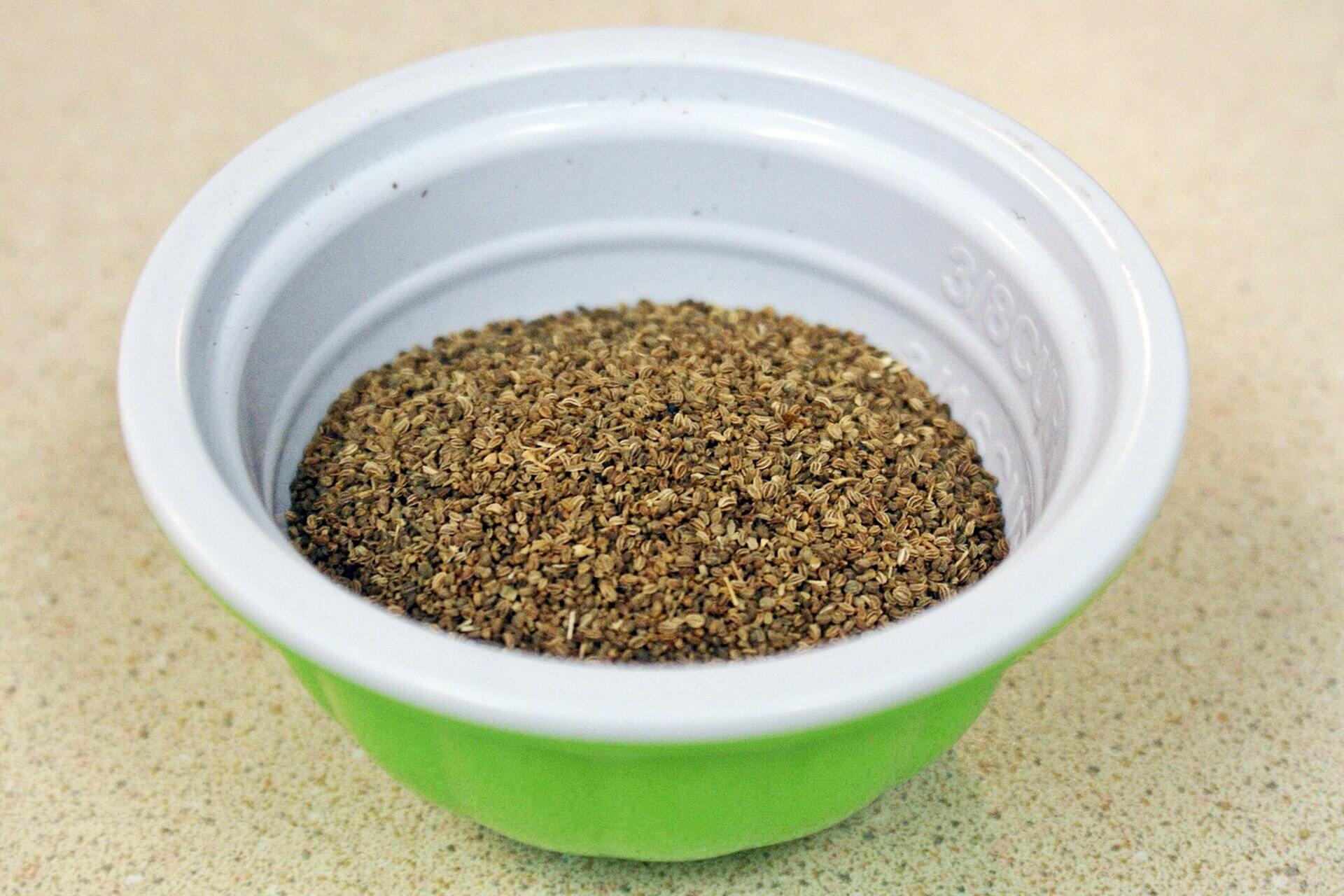

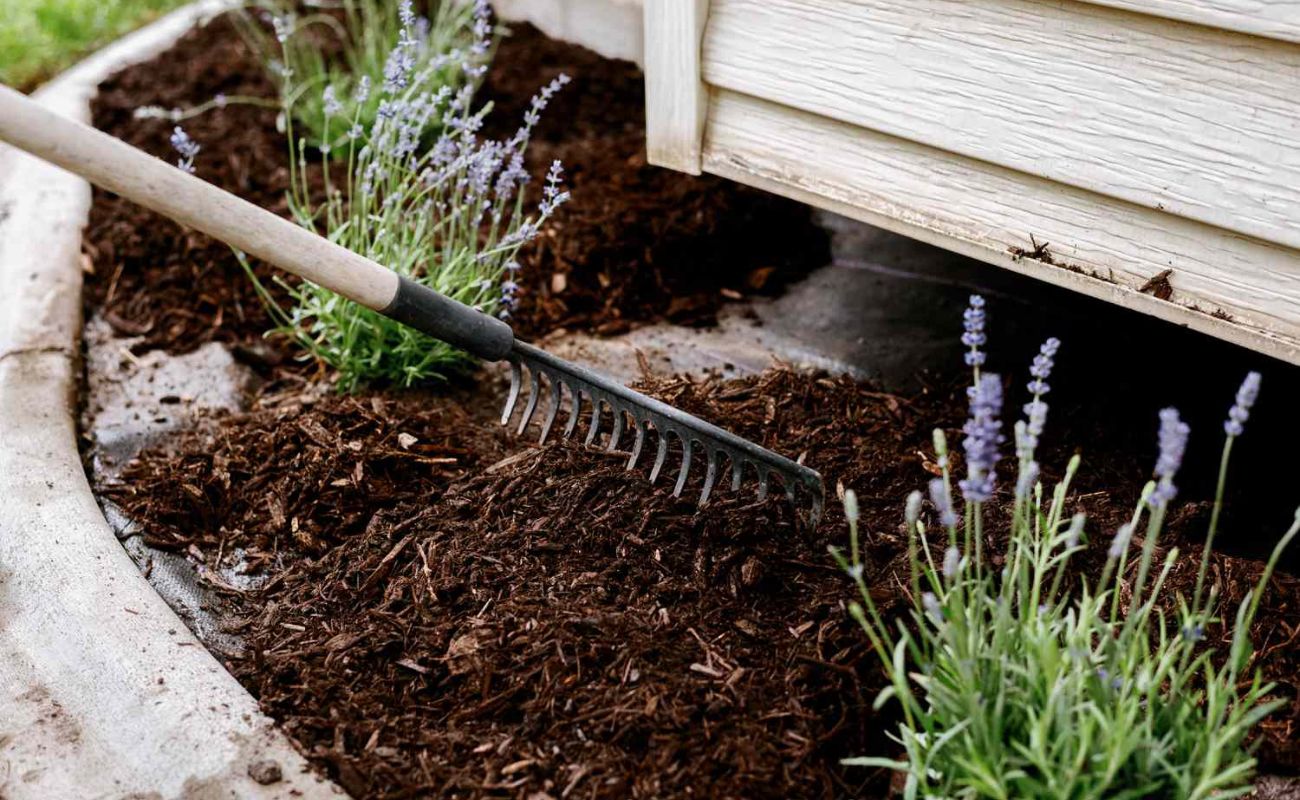
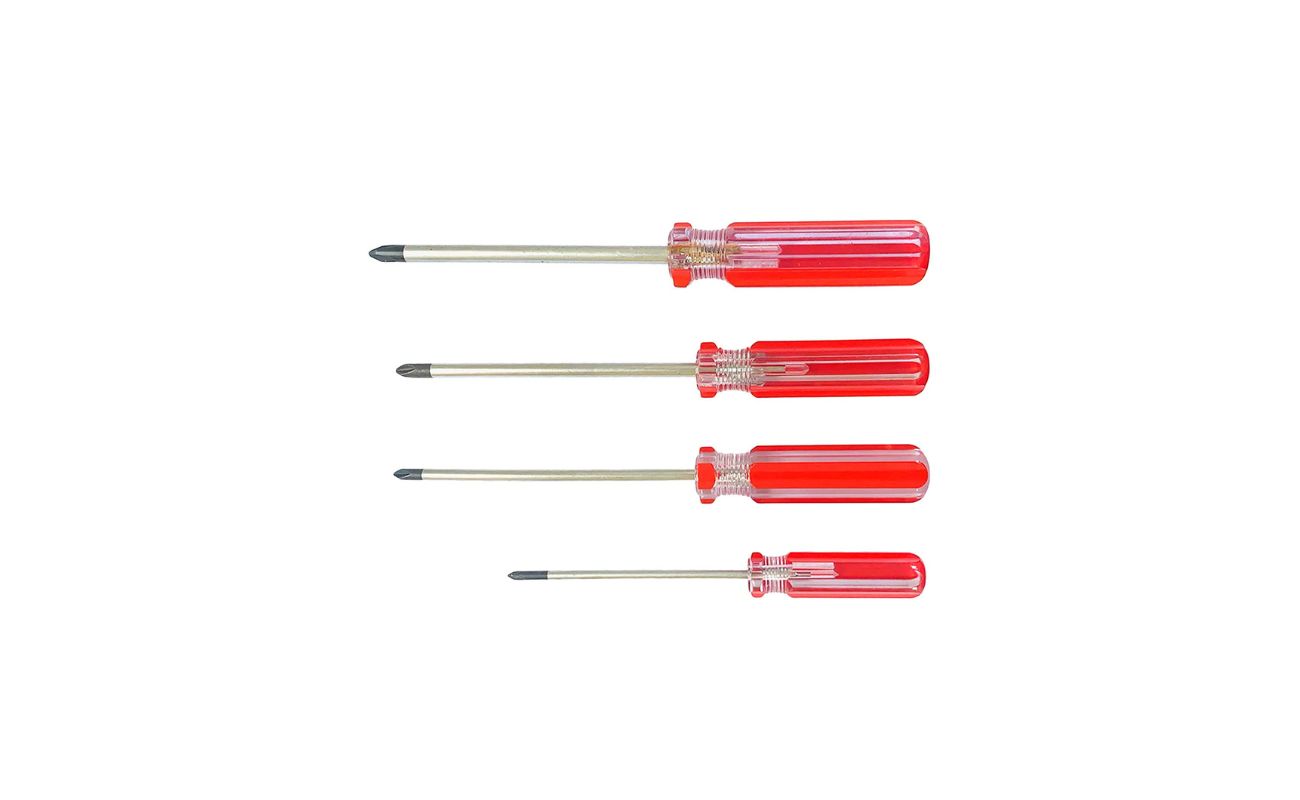
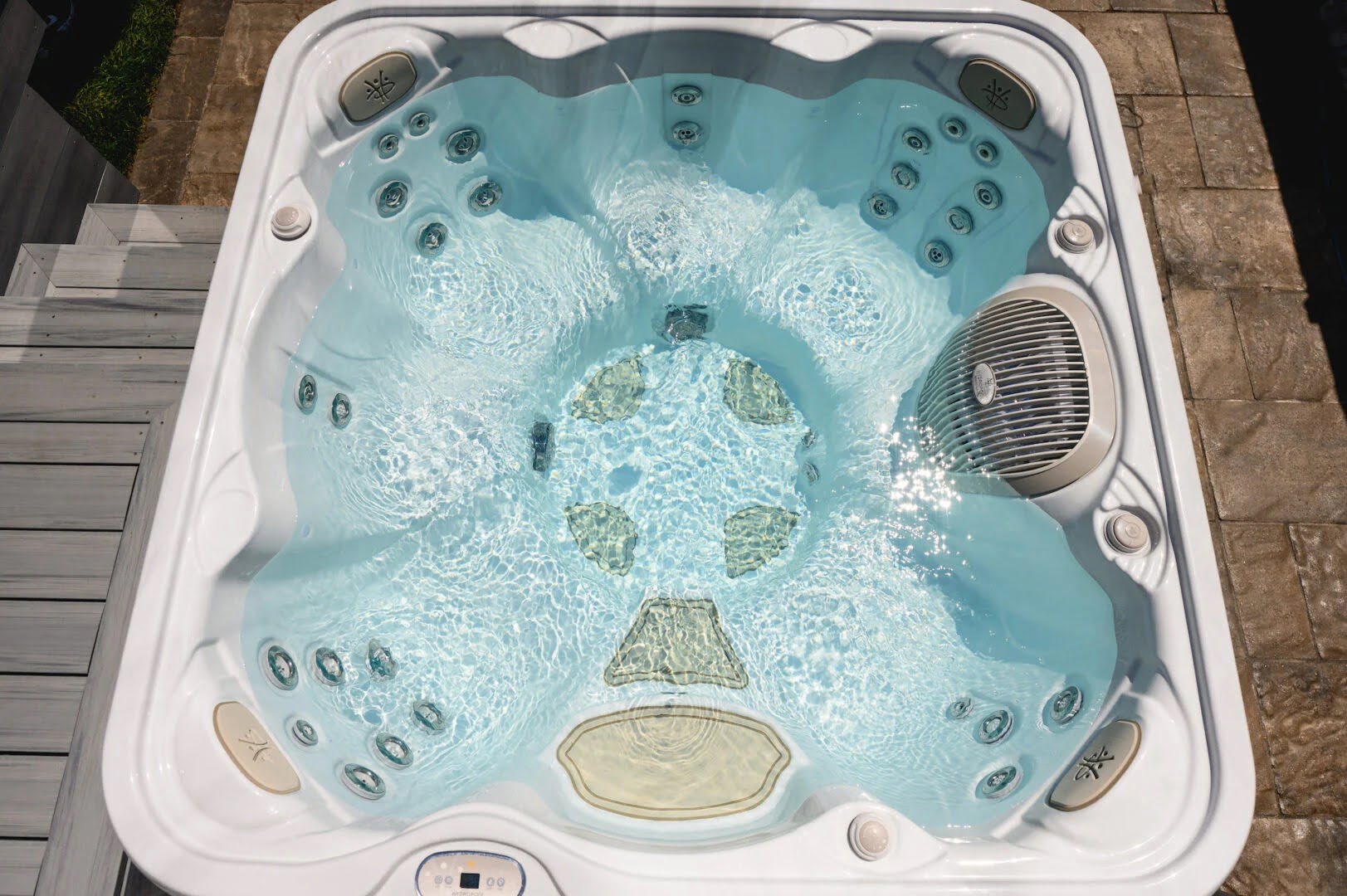
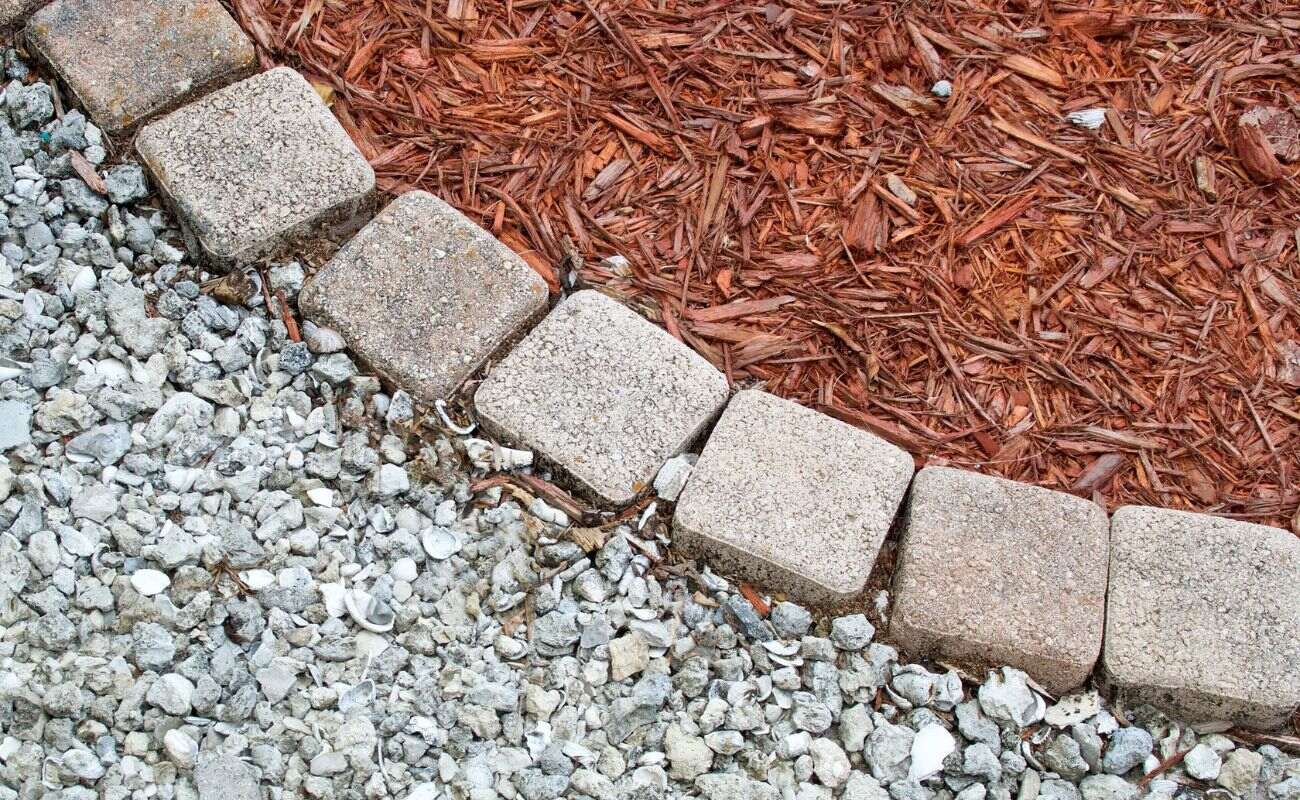


0 thoughts on “What Can I Use Instead Of Mulch For Landscaping”